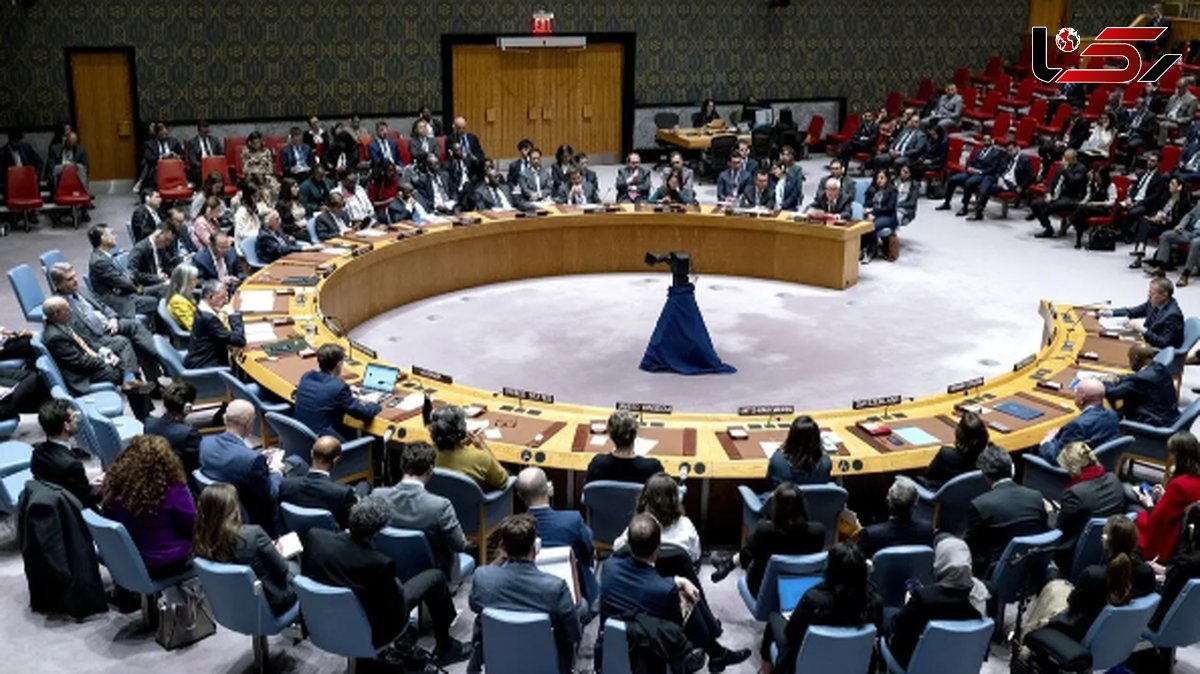Diplomacy or Drama? Decoding the Return of UN Sanctions on Iran
Rokna Political Desk: The United Nations Security Council, in its session on September 19, 2025, voted against extending the JCPOA sanctions waivers, thereby activating the snapback mechanism and reinstating global sanctions against Iran—a development that poses serious challenges to Iran’s diplomacy and economy.

Amid escalating tensions over Iran’s nuclear program, the UN Security Council convened a decisive session focused on a draft resolution submitted by South Korea aimed at extending the sanctions waivers outlined in the Joint Comprehensive Plan of Action (JCPOA). The draft resolution failed with four votes in favor (Algeria, China, Pakistan, and Russia), nine votes against (Denmark, France, Greece, Panama, Sierra Leone, Slovenia, Somalia, the United Kingdom, and the United States), and two abstentions (Guyana and South Korea).
According to Fararu, this defeat not only marked the end of the diplomatic path to preserve the waivers but also opened the door to the activation of the “snapback” mechanism—a tool embedded in Security Council Resolution 2231 (2015). With the automatic implementation scheduled for October 18, 2025, it represents an imminent threat to Iran’s economy.
This development, occurring amid deep disagreements between Western and Eastern powers over Iran’s nuclear compliance, was more than a technical vote; it symbolized a diplomatic deadlock. The United States and its European allies (the E3: France, Germany, and the United Kingdom) insisted on increased pressure, while Russia and China emphasized regional stability and the avoidance of heightened tensions. The outcome signaled to global markets that UN sanctions, suspended since 2016, are on the verge of returning, potentially triggering a chain of economic shocks for Tehran.
The Snapback Mechanism in Practice
The snapback process, initiated on September 27, 2025, represents the culmination of the 30-day snapback period. The mechanism, activated by the E3 on August 28, 2025, allows a 30-day window: the first ten days for submitting a waiver extension draft, followed by a Security Council vote. With the South Korean draft’s failure, no barriers remain to the automatic reinstatement of sanctions, which are set to be officially re-imposed from 8:00 PM on September 27, unless a last-minute agreement is reached.
The snapback restores six previous Security Council resolutions (1696 in 2006 through 2224 in 2015), encompassing broad restrictions on uranium enrichment, arms trade, financial activities, and shipping related to Iran. Unlike unilateral U.S. sanctions, these measures are binding on all 193 UN member states, with implementation overseen by the Security Council Sanctions Committee, which will update the list of sanctioned individuals and entities.
In practice, the snapback unfolds gradually: asset freezes, trade restrictions, and banking transaction monitoring—all while Resolution 2231 stipulates that sanctions do not apply retroactively to pre-existing contracts but block new transactions. Originally designed to prevent abuse, this mechanism now serves as a diplomatic pressure tool, potentially returning Iran to a pre-2015 scenario of international isolation.
Reinstated Sanctions: From Oil to Shipping
The reinstated sanctions, largely based on 2006–2015 resolutions, target critical sectors of Iran’s economy. Central to the sanctions are prohibitions on uranium enrichment and nuclear-related activities, blocking imports of equipment such as centrifuges and imposing strict oversight on technology exports. The arms sector, covering conventional and missile weapons, directly affects Iran’s defense industry and complicates trade with foreign partners, including Russia and China.
Financial sanctions involve freezing assets of over 50 Iranian individuals and entities, including key banks such as Bank Melli and Bank Saderat, as well as companies affiliated with the IRGC, cutting access to SWIFT and global markets—impacting roughly 20% of Iran’s foreign currency transactions. Trade and shipping restrictions include investment limitations in the petrochemical and oil sectors, which constitute more than 40% of Iran’s exports, and maritime transport bans.
While focused on institutions such as the Atomic Energy Organization and the Ministry of Defense, these sanctions inevitably affect Iran’s broader economy, including reduced foreign investment and higher financing costs.
Implementation Timeline and Economic Impact
From the official activation on September 27, 2025, to full economic impact, effects may take several weeks to six months, depending on member states’ compliance and global market reactions. The initial phase (through October) will primarily impact financial markets, with asset freezes and restricted banking access potentially weakening the rial, reminiscent of the post-2018 scenario after the U.S. withdrawal from the JCPOA. The intermediate phase (November–December), affecting oil exports (which supply 50% of Iran’s foreign revenue), may accelerate inflation.
Long-term structural effects (by mid-2026) may include a 5–10% GDP contraction, akin to 2012–2015, loss of $100 billion in foreign investment, and intensified brain drain. With current inflation at 40%, these shocks could trigger a recession-inflation cycle, reducing oil revenue by up to 20%, compressing the government budget by 30%, and threatening social subsidies.
However, past experience indicates that Iran may partially mitigate impacts through trade with China and Russia, covering 60% of current exports, though this flexibility is limited.
Send Comments